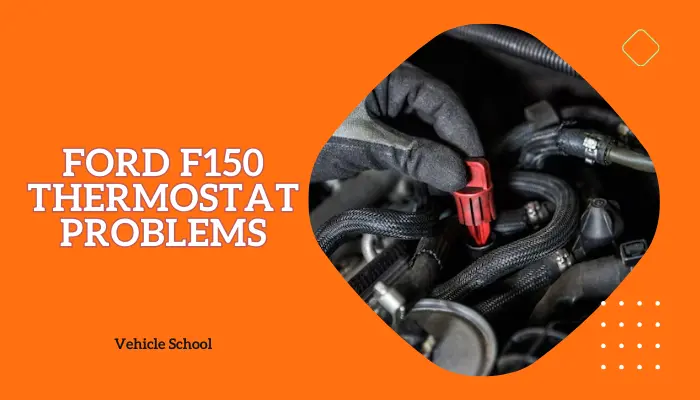You’re probably tired of your F150 not shifting properly. As an F150 owner myself, I understand the annoyance. That’s why I’ve gathered all the possible causes and solutions to help you get those gears shifting smoothly again.
Stick with me through this article, we’ll tackle this together.
Why Is Your Ford F150 Not Shifting Properly?
The Ford F150 won’t change gears properly when there’s a bad leadframe or transmission issue. Sometimes, it can also happen when your truck is in the wrong drive mode. The best fix is to replace either one of the two parts if switching modes doesn’t help.
Let’s go through all these reasons in more detail first.

1. Bad Lead Frame
Some 2011-2013 F-150s with a 6.0 transmission might unexpectedly start in 5th gear and stay stuck there.
Look for the wrench light or seat belt reminder, the speedometer at zero, and the odometer showing dashes while driving. This issue often comes with DTCs like P0720 and P0722 in the powertrain control module.
It happens due to problems with the leadframe, a vital part of the transmission system.
The leadframe connects the transmission’s electrical components. With time, it can have issues like corrosion or bad connections. When the leadframe fails, it disrupts how the transmission talks to the truck’s control modules.
This can make shifting gears difficult and even cause your F150 struggle to accelerate.
You can also find an official TSB regarding this problem.
2. Sports Mode Is On
If your F150 feels like it’s not shifting gears when you give it a lot of gas, especially in Sports Mode, it’s probably not a glitch.
Sports Mode keeps the transmission in gear longer, even revving up to redline before shifting. This is meant to give you more power when you step on the gas pedal again.
So, if you feel like your truck is “stuck” in a gear during fast acceleration, especially in Sports Mode, it’s just the system doing its thing, not something wrong with your truck.
3. Transmission Issue
In 2018, some F-150s with the 3.5 engine had transmission problems, causing issues with gear shifts. Owners noticed sudden shifts, delays between gears, and strange “clunk” noises, especially in cold weather.
These problems were attributed to Ford F150 transmission problems, which is a common concern among Ford F150 owners. One possible cause might have been using inadequate materials for certain components, leading to premature wear and failure.
This problem looks like it was common in various Ford 3.5 engines across other models besides the F150. Some drivers even had warning lights come on, making their vehicles hard to drive. If your model’s from that year, your transmission might just be done for.
How To Fix F150 That’s Not Shifting Gears Properly?
Do the basics first, try turning your ignition off and on, and check your Drive Mode. If you’re in sport mode and changing it doesn’t help then try the following fixes.
1. Replace Molded Leadframe
If you’ve got an F150 with the 6R80, then replacing the leadframe might be the transmission jerking and transmission slipping fix you’re looking for.
This is the only direct fix you can DIY, so I’ll include the full details of the process. Let’s go through all the stuff you’ll need first.
Here Are The Tools Needed:
- 3/4 or 19mm socket
- Flex head Long Reach 3/8 drive ratchet
- 6-inch extension
- Wobble 8mm socket
- Torx 30 socket
- Torx 27 socket
- Sticker scraper with a razor blade
These Materials Are Needed:
- A new molded lead frame
- Foam sleeve for solenoid connectors (comes with new lead frame)
- Rear feed tube seals
- Rectangular seal for the top of valve body
Molded Leadframe Replacement Procedure:
- Locate the transmission pan.
- Remove the fill plug and drain the fluid.
- Remove the pan bolts, support, and pan.
- Remove the filter.
- Lower the bulkhead lever, and replace seals if needed.
- Loosen and remove the bulkhead sleeve connector.
- Remove the Torx 30 screws from the valve body, and leave the center for last.
- Drain fluid, and remove the old lead frame with Torx 27 screws.
- Ensure the foam sleeves on the new lead frame, are secured with screws.
- Check the thermal bypass valve.
- Align and secure valve body, torque Torx 27 bolts.
- Check alignment and bulkhead sleeve lock.
- Refill with 9 quarts of Mercon LV fluid.
- Start the engine, reach operating temperature.
- Check and adjust the fluid level.
- Clear the error codes and take your truck for a test drive.
To finish up, remember to replace the rectangular seal on the valve body. Also, for 2018 models, a reminder that some have a 12-bolt configuration. If the rear feed tube seals stuck to the valve body during removal, they might need refreshing too.
Though not hard to do, this process is still very detailed, so if you’re not sure what to do, here are a few resources:
- Ford WSM: Scroll down to the Shift Solenoids (SS) section in this document.
2. Get A New Transmission
I won’t be adding steps here, as replacing the transmission is a long process and also needs some special tools at hand. I’d recommend doing your own research for this, and if possible, getting a new Transmission installed directly by a mechanic.
Concluding Thoughts
So, what’re you waiting for? If you’re lucky, it might just be the bad lead frame at most – which should cost around $300-$500 to fix.
Don’t wait to fix the issue- it’s a big deal for safety (especially when you’re navigating traffic).
Once you get it taken care of, you’ll also improve fuel mileage and save your engine in the long run.
That’s all for this post, good luck.






